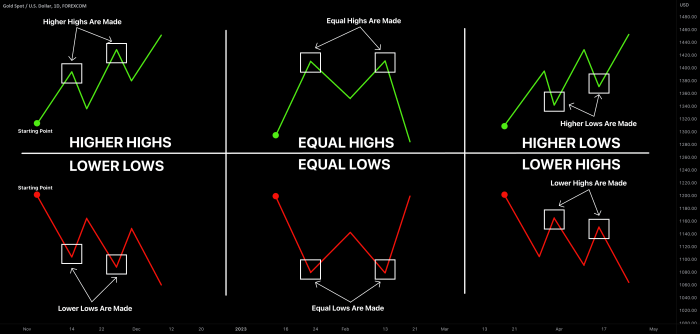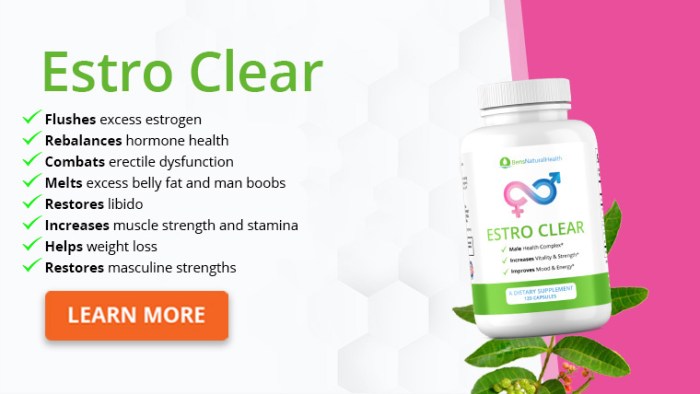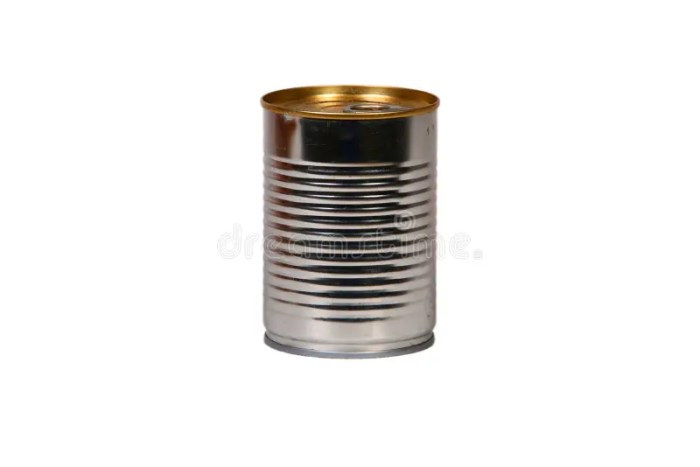Can you reverse a vasectomy? This in-depth guide explores the intricacies of vasectomy reversal, from the surgical techniques and potential complications to pre-operative considerations and post-recovery care. We’ll delve into candidate selection, examining the factors that influence the success rate and the importance of open communication between patient and physician.
Understanding the procedure, potential risks, and realistic expectations is crucial for informed decision-making. We’ll also examine alternative fertility options and ethical considerations, ensuring a thorough and comprehensive perspective on this significant life decision.
Vasectomy Reversal
Vasectomy reversal, also known as vasovasostomy, is a surgical procedure aimed at restoring the ability to father children after a vasectomy. This procedure involves reconnecting the severed vas deferens tubes, allowing sperm to pass through again. While not a guaranteed success, vasectomy reversal can be a viable option for men who desire to have children after a vasectomy.
Surgical Techniques for Vasectomy Reversal
Various surgical techniques are employed in vasectomy reversal, each with its own nuances and potential outcomes. These techniques vary in complexity and invasiveness, impacting recovery times and potential risks. The selection of the optimal technique depends on several factors, including the surgeon’s expertise, the duration since the vasectomy, and the specific anatomical characteristics of the vas deferens.
- Microsurgical Vasovasostomy: This technique, often considered the gold standard, involves the use of a microscope to reconnect the vas deferens. The precise and delicate nature of the procedure minimizes tissue damage and increases the likelihood of successful sperm transport. It allows for a more thorough examination and repair of the vas deferens, leading to better long-term outcomes.
- Open Vasovasostomy: This technique involves a larger incision and more extensive tissue manipulation. It is typically used when the microsurgical approach is not feasible or if significant scarring or damage to the vas deferens is present. The recovery time is generally longer compared to the microsurgical method, and the risk of complications may be slightly higher.
Factors Affecting Success Rate
The success rate of vasectomy reversal is influenced by several factors. The time elapsed since the vasectomy plays a significant role, with shorter intervals often correlating with higher chances of success. The extent of the damage to the vas deferens during the initial vasectomy also affects the potential outcome. The surgeon’s skill and experience are paramount, as their expertise directly impacts the precision and thoroughness of the procedure.
Potential Complications
As with any surgical procedure, vasectomy reversal carries potential complications. These complications can range from minor discomfort and swelling to more serious issues such as infection, bleeding, and scarring. Careful consideration of the risks and benefits is crucial before undergoing the procedure.
Vasectomy Reversal Outcomes: A Comparative Overview
| Procedure Type | Success Rate (approx.) | Recovery Time (approx.) | Potential Risks |
|---|---|---|---|
| Microsurgical Vasovasostomy | 60-80% | 4-6 weeks | Infection, bleeding, hematoma, scarring, incomplete anastomosis |
| Open Vasovasostomy | 40-60% | 6-8 weeks | Infection, bleeding, hematoma, scarring, incomplete anastomosis, greater risk of nerve damage |
Success rates are estimates and can vary significantly based on individual factors. Factors like the patient’s age, overall health, and the specific surgical technique employed will influence the outcome.
Candidate Selection for Vasectomy Reversal
Choosing whether or not to pursue a vasectomy reversal is a significant decision, requiring careful consideration of both personal circumstances and medical factors. The process involves a thorough evaluation to determine the suitability of the patient and the potential for a successful outcome. A key aspect of this evaluation is identifying realistic expectations and communicating those openly with the physician.The decision to pursue vasectomy reversal is not solely based on a desire to regain fertility.
Factors like the length of time since the vasectomy, the patient’s overall health, and the presence of any contributing medical conditions play critical roles in the decision-making process. Furthermore, the patient’s age and partner’s health are crucial considerations, as these elements impact the likelihood of successful conception. A candid dialogue between the patient and physician is essential to establish a shared understanding of the procedure’s complexities and potential outcomes.
Criteria for Suitable Candidates
Determining a patient’s suitability for vasectomy reversal involves a multi-faceted assessment. This includes evaluating the time elapsed since the vasectomy, the cause of the vasectomy, and the overall health of the patient. A thorough medical history is crucial to identify any underlying conditions that might influence the success rate. Additionally, factors like the quality of the sperm and the partner’s reproductive health are assessed.
Factors Influencing the Decision
Several factors contribute to the decision of whether to pursue vasectomy reversal. These factors include the length of time since the vasectomy, the patient’s age, and the presence of any health conditions. The partner’s health and their desire to conceive also play a significant role. Patients should carefully consider the potential risks and benefits, including the possibility of reduced success rates with increasing time elapsed since the vasectomy.
Ultimately, the decision rests on a careful balancing of personal goals, medical realities, and the potential risks.
Success Rates and Demographics
Success rates for vasectomy reversal can vary based on several factors, including the patient’s age, the time elapsed since the vasectomy, and the presence of any contributing medical conditions. Generally, the longer the time since the vasectomy, the lower the chance of success. Studies have shown that success rates are typically higher for patients who undergo reversal within a shorter timeframe post-vasectomy.
Furthermore, the quality of the sperm and the partner’s fertility are also crucial determinants of success. Open communication between the patient and physician is paramount in setting realistic expectations and understanding the complexities of this procedure.
Open Communication and Realistic Expectations
Honest and open communication between the patient and physician is essential. This communication should encompass the potential risks and benefits of the procedure, along with the realistic expectations regarding the success rate. The physician should provide a comprehensive understanding of the procedure, potential complications, and the need for patience and persistence. This transparent dialogue empowers patients to make informed decisions aligned with their personal circumstances and medical realities.
Comparison of Patient Characteristics and Implications for Success
| Patient Characteristic | Potential Impact on Success |
|---|---|
| Time elapsed since vasectomy (shorter vs. longer) | Shorter timeframes generally correlate with higher success rates. |
| Patient age | Younger patients tend to have better outcomes. |
| Presence of prior vasectomy complications | Prior complications might affect the success rate. |
| Quality of sperm | Stronger sperm quality usually leads to greater chances of success. |
| Partner’s fertility | Partner’s fertility status significantly influences the likelihood of conception. |
Pre-Reversal Considerations

Before embarking on the journey of vasectomy reversal, meticulous pre-operative assessments and careful patient preparation are crucial. A thorough understanding of the patient’s medical history, lifestyle factors, and realistic expectations is paramount to maximizing the chances of a successful outcome. This crucial phase sets the stage for the surgical procedure and ensures the patient is well-informed and prepared for the process.
Pre-Operative Assessments and Tests
Comprehensive pre-operative assessments are vital to evaluate the patient’s overall health and identify any potential risks or complications. These assessments include a detailed medical history review, focusing on any pre-existing conditions, allergies, and current medications. A physical examination is conducted to assess general health and identify any relevant anatomical variations. Diagnostic tests, such as blood tests to check for infections or clotting disorders, and urinalysis, are often necessary to rule out any underlying health issues.
So, can you reverse a vasectomy? The short answer is, sometimes. It’s a complex procedure, and success rates vary. Understanding the potential cellular processes involved, like the impact of free radicals on the body, information about free radicals , can help explain why some vasectomy reversals are more successful than others. Ultimately, the chance of a successful reversal depends on several factors and isn’t a guarantee.
Further, imaging studies, such as ultrasound or X-rays, might be required to assess the status of the vas deferens and surrounding tissues, offering a detailed visual representation of the anatomical structures involved.
Importance of Patient Preparation and Counseling
Thorough counseling is an essential component of the pre-reversal process. This involves educating the patient about the procedure, potential risks, benefits, and expected outcomes. The process also clarifies realistic expectations regarding the chances of restoring fertility. Open communication between the patient and the medical team is paramount to addressing any concerns and ensuring a shared understanding of the procedure and its potential results.
Realistic expectations and appropriate patient counseling are vital to avoid disappointment or unrealistic hopes.
Possible Impact of Lifestyle Choices
Lifestyle choices can influence the outcome of the vasectomy reversal procedure. Smoking, excessive alcohol consumption, and a poor diet can negatively impact healing and potentially reduce the chances of success. Maintaining a healthy lifestyle, including a balanced diet, regular exercise, and avoiding smoking and excessive alcohol consumption, significantly enhances the body’s natural healing capabilities. These healthy lifestyle choices also aid in the overall well-being of the patient, reducing potential complications and maximizing the chances of a successful outcome.
Step-by-Step Guide for Patient Preparation
This section Artikels a step-by-step guide for patient preparation:
- Initial Consultation: The initial consultation involves a detailed discussion of the patient’s medical history, lifestyle choices, and expectations. Questions about previous surgeries, medications, allergies, and relevant medical conditions will be addressed.
- Diagnostic Testing: Based on the initial consultation, diagnostic tests, including blood tests and imaging studies, are performed to evaluate the patient’s health and the status of the vas deferens.
- Pre-Operative Instructions: Detailed pre-operative instructions are provided, including information on medication adjustments, fasting requirements, and necessary arrangements for post-operative care.
- Counseling and Education: The patient is educated about the procedure, potential risks and benefits, and the importance of adhering to post-operative instructions.
- Lifestyle Modifications (if applicable): Recommendations regarding lifestyle modifications, such as dietary adjustments, exercise routines, and smoking cessation, may be provided to optimize the chances of a successful outcome.
Important Factors to Consider Before the Procedure
- Realistic Expectations: Vasectomy reversal is not a guaranteed restoration of fertility. Success rates vary depending on factors like the duration since the vasectomy and the extent of damage to the vas deferens.
- Medical History: A complete and honest disclosure of medical history, including pre-existing conditions and medications, is crucial for the surgical team to assess potential risks and complications.
- Lifestyle Factors: Adopting a healthy lifestyle, including a balanced diet, regular exercise, and avoidance of smoking and excessive alcohol consumption, significantly impacts healing and success rates.
- Surgical Expertise: Choosing a qualified and experienced surgeon with a proven track record in vasectomy reversals is essential for optimal results.
- Post-Operative Care: A thorough understanding of the post-operative care plan, including medication adherence and follow-up appointments, is essential.
Post-Reversal Care and Recovery

Navigating the post-vasectomy reversal journey requires careful attention to detail and a proactive approach to recovery. Understanding the expected healing process, potential complications, and the importance of meticulous post-operative care is crucial for a successful outcome. This phase demands patience and adherence to medical recommendations to maximize the chances of restoring fertility.Post-operative care is tailored to each individual patient’s specific circumstances, ensuring optimal healing and minimizing risks.
The recovery period, while often challenging, is a critical step towards achieving the desired results. Monitoring progress and adhering to prescribed guidelines are vital in preventing complications and promoting successful tissue integration.
Post-Operative Care Instructions
Following a vasectomy reversal, strict adherence to post-operative instructions is paramount. This includes careful wound care, pain management, and activity restrictions. Early detection and management of potential complications are key to a smooth recovery.
- Wound Care: Gentle cleansing of the incision site with antiseptic solution, as directed by the surgeon, is essential. Avoid vigorous rubbing or scrubbing. Keep the area clean and dry to prevent infection. Report any signs of increased pain, redness, swelling, or discharge to the surgeon immediately.
- Pain Management: Pain medication, as prescribed by the physician, should be taken as directed. Report any significant fluctuations in pain levels or inadequate pain relief. Over-the-counter pain relievers can also help, but always consult with the doctor before combining different medications.
- Activity Restrictions: Heavy lifting, strenuous exercise, and sexual activity should be avoided for the first few weeks following the procedure. This period is crucial for proper healing and tissue integration.
Typical Recovery Period, Can you reverse a vasectomy
The recovery period following a vasectomy reversal typically spans several weeks. The time frame varies depending on the individual patient’s response to the surgery, the extent of the procedure, and any complications.
- Initial Days: Patients may experience moderate to significant pain and swelling in the first few days. Rest and elevation of the scrotum are often recommended.
- Weeks 1-4: Pain and swelling should gradually subside. Patients may resume light activities, such as walking, with increasing intensity as the weeks progress.
- Weeks 4-8: Patients can often return to more demanding activities, but it’s essential to listen to the body and avoid any activities that cause discomfort. Sexual activity should be avoided for several weeks to allow the healing process to complete. It is important to note that this is a general timeframe, and individual variations can occur.
Potential Complications
While complications are rare, some potential risks include infection, bleeding, hematoma formation, and seroma formation. Prompt medical attention is necessary if any of these complications arise.
- Infection: Signs of infection include increased pain, swelling, redness, warmth, and pus-like drainage from the incision site.
- Bleeding: Excessive bleeding can lead to a hematoma (a collection of blood). Signs include significant swelling, bruising, and pain.
- Seroma: A seroma is a collection of fluid at the surgical site. It may present as swelling or tenderness. These complications are rare but should be reported to the physician.
Importance of Follow-up Appointments
Regular follow-up appointments are critical for monitoring healing progress, detecting any complications early, and ensuring the success of the vasectomy reversal.
- Regular Check-ups: The surgeon will assess the healing process and provide necessary guidance and adjustments to the care plan.
- Early Detection: Early detection of potential complications allows for prompt intervention and management.
- Adjustments: The doctor might adjust the recovery timeline based on individual patient response and progress.
Activities to Avoid During Initial Recovery
To promote optimal healing, certain activities should be avoided during the initial recovery period.
So, can you reverse a vasectomy? The short answer is, sometimes. It’s a complex procedure, and the success rate varies greatly depending on factors like the length of time since the vasectomy and the specific method used. While the procedure itself is focused on restoring fertility, it’s worth noting that successful reversal often hinges on a variety of health factors, including the mean cell hemoglobin concentration.
Mean cell hemoglobin concentration is an important blood test that can provide insights into the overall health of the patient, and ultimately affect the chance of a successful vasectomy reversal. Ultimately, it’s crucial to discuss the options and risks with a qualified doctor to determine if reversal is even possible or advisable in your situation.
- Heavy Lifting: Avoid activities that strain the abdominal muscles or increase intra-abdominal pressure.
- Strenuous Exercise: Limit strenuous activities to prevent excessive strain on the healing tissues.
- Sexual Activity: Sexual activity should be avoided for a prescribed period to allow adequate healing of the surgical site.
Healing Process Stages
The following table Artikels the typical healing stages and recommended activities during each phase:
| Healing Stage | Timeframe | Recommended Activities | Activities to Avoid |
|---|---|---|---|
| Initial Healing (Days 1-7) | First week | Light walking, gentle stretching | Heavy lifting, strenuous exercise, sexual activity |
| Intermediate Healing (Weeks 1-4) | First month | Increased activity level, light exercise, avoiding high-impact activities | High-impact sports, heavy lifting, excessive straining |
| Advanced Healing (Weeks 4-8) | Second month | Gradual return to normal activities, sexual activity (as cleared by the doctor) | Activities causing significant strain or discomfort |
Success Rates and Outcomes: Can You Reverse A Vasectomy
Vasectomy reversal, while offering a chance for regained fertility, isn’t a guaranteed success. Understanding the success rates and factors influencing them is crucial for realistic expectations. This section delves into the statistical likelihood of successful sperm production post-reversal, the long-term implications for fertility, and how different surgical techniques affect the outcome.
Success Rates of Vasectomy Reversal Procedures
Vasectomy reversal success rates vary significantly. Factors like the surgeon’s experience, the duration since the vasectomy, and the extent of the damage to the vas deferens all play a role. Studies indicate that the overall success rate for sperm production after reversal is approximately 50-70%, but this range can fluctuate considerably depending on the specific circumstances. This doesn’t mean a 50% chance of getting pregnant immediately, but rather a 50-70% chance of successful sperm production, a prerequisite for potential pregnancy.
This statistic alone doesn’t reflect the complex interplay of factors involved.
Factors Contributing to Successful Sperm Production
Several factors impact the chances of successful sperm production after a vasectomy reversal. The time elapsed since the vasectomy is a critical element. The longer the time period, the greater the potential damage to the vas deferens and the lower the chance of complete and successful repair. Furthermore, the technique used for the initial vasectomy and the extent of the damage caused by it also influence the outcome of the reversal.
Long-Term Implications of Vasectomy Reversal on Fertility
While a vasectomy reversal can restore some fertility, it doesn’t guarantee complete restoration to pre-vasectomy levels. Even with successful sperm production, there’s no guarantee of conception. The long-term fertility after reversal can vary significantly, depending on the individual and the factors influencing the success of the procedure. Some patients might experience reduced sperm count or motility compared to their pre-vasectomy levels.
Additionally, potential issues with the quality of sperm, such as morphology, can also arise. Consequently, achieving pregnancy may require additional assistance, like in vitro fertilization (IVF), even after a successful reversal.
So, can you reverse a vasectomy? It’s a complex question, and the answer isn’t a simple yes or no. While some procedures aim to reconnect the vas deferens, the success rate isn’t guaranteed, and factors like the length of time since the vasectomy often play a significant role. Interestingly, some studies suggest a potential link between certain health conditions, like thyroid disease in men , and fertility.
Ultimately, the ability to reverse a vasectomy hinges on a number of personal factors and medical considerations.
Comparison of Vasectomy Reversal Procedures
Different surgical techniques for vasectomy reversal are available. Microsurgical techniques, involving delicate manipulation of the vas deferens, generally offer better chances of successful sperm production compared to open surgical approaches. The use of specialized instruments and microscopes during the microsurgical procedure allows for precise repair, minimizing damage and increasing the likelihood of successful vas deferens reconnection. Open procedures, though less precise, may be necessary in certain situations, especially when the vas deferens has undergone significant damage.
The choice of technique depends on the individual patient’s circumstances.
Correlation Between Factors and Success Rates
| Factor | Impact on Success | Example |
|---|---|---|
| Time since vasectomy | Inversely proportional | A reversal performed after 10 years might have a lower success rate than one performed after 2 years. |
| Extent of vas deferens damage | Inversely proportional | A reversal where the vas deferens is severely scarred might result in a lower chance of sperm production. |
| Surgical technique | Microsurgery generally higher | Microsurgical vasectomy reversal techniques provide better precision and generally lead to a higher success rate. |
| Patient age | Potentially reduced | Older age can be a factor impacting overall fertility. |
The table illustrates the correlation between various factors and the likelihood of success in vasectomy reversal procedures. Each factor significantly contributes to the final outcome. A patient’s individual circumstances, combined with the surgeon’s expertise and the chosen surgical technique, all influence the success rate of the procedure. While some patients may experience successful sperm production and subsequent pregnancies after reversal, others may not.
Alternatives to Vasectomy Reversal
Navigating the path to parenthood after a vasectomy can feel challenging. While vasectomy reversal is a viable option for some, it’s not always successful, and the procedure itself carries risks. Understanding alternative methods for restoring fertility is crucial for making informed decisions. This exploration will detail various options, highlighting their potential benefits and drawbacks, effectiveness, and associated costs.
Sperm Retrieval Techniques
Sperm retrieval methods offer a pathway to conception when a vasectomy reversal isn’t feasible or desirable. These methods involve extracting sperm from the testicles or epididymis. These procedures provide a viable alternative to surgery in specific circumstances.
- Testicular Sperm Extraction (TESE): This minimally invasive technique involves extracting sperm directly from the testicles. It’s a relatively quick procedure with a high success rate in cases where the vas deferens is damaged or absent. TESE is often preferred when the sperm is not accessible via other methods. A potential drawback is that the procedure might cause some discomfort or bruising.
Success rates can vary, but they are often higher than in cases where other methods are unsuccessful.
- Percutaneous Epididymal Sperm Aspiration (PESA): PESA is a less invasive technique that retrieves sperm from the epididymis, the tube that carries sperm from the testicles to the vas deferens. This method is suitable when the vas deferens is obstructed, making it challenging to retrieve sperm from the testicles. The recovery time is generally shorter than with TESE. The success rate is often comparable to TESE.
- Microsurgical Sperm Aspiration (MESA): This method uses a microscope to precisely locate and extract sperm from the epididymis or testicles. It offers a more targeted approach, especially in cases of severe damage to the vas deferens or other complications. The microsurgical approach is more delicate than the previous two and carries a reduced risk of complications. Success rates are often higher than with TESE or PESA, especially in cases where the sperm quality is compromised.
Assisted Reproductive Technologies (ARTs)
Assisted reproductive technologies (ARTs) are essential tools for couples facing fertility challenges. These procedures are commonly used alongside sperm retrieval techniques.
- Intracytoplasmic Sperm Injection (ICSI): This procedure involves directly injecting a single sperm into an egg. ICSI is often used when sperm count or motility is low or when the sperm is unable to fertilize the egg naturally. This procedure is particularly effective when combined with sperm retrieval techniques. Success rates are typically high, but the procedure requires specialized expertise and can be more expensive than other ARTs.
- In Vitro Fertilization (IVF): In IVF, eggs are fertilized outside the body in a laboratory setting. This method is beneficial when sperm quality is poor or when there are issues with the egg or uterus. IVF can be combined with sperm retrieval techniques, offering a comprehensive approach to restoring fertility. Success rates vary, but they can be very high when combined with sperm retrieval techniques.
IVF is a more complex and costly procedure compared to other ARTs.
- Intrauterine Insemination (IUI): IUI involves placing sperm directly into the uterus using a catheter. IUI is a less complex and less expensive procedure than IVF or ICSI. It’s often used when there are no significant issues with sperm quality or egg function. Success rates are often lower than with IVF or ICSI. It is often combined with sperm retrieval techniques to improve success rates.
Comparison of Alternative Fertility Options
| Alternative Fertility Option | Potential Benefits | Potential Drawbacks | Effectiveness (Success Rates) | Estimated Costs |
|---|---|---|---|---|
| TESE | High success rates in cases of damaged vas deferens | Potential discomfort, bruising | High, depending on individual circumstances | Moderate |
| PESA | Minimally invasive, shorter recovery | Less precise than TESE or MESA | Comparable to TESE | Low to moderate |
| MESA | Microsurgical precision, potentially higher success rates | More complex, potentially higher cost | High, often higher than TESE or PESA | High |
| ICSI | High success rates, especially with low sperm count | More complex than IUI | High | High |
| IVF | Addresses various fertility issues | Complex, time-consuming, high cost | High | Very High |
| IUI | Less complex, less expensive | Lower success rates | Lower than IVF or ICSI | Low |
Success rates for all these procedures are influenced by several factors, including the patient’s overall health, the cause of infertility, and the skill of the medical team.
Ethical Considerations and Patient Education
Vasectomy reversal, while a potentially life-altering procedure for couples seeking to regain fertility, presents unique ethical and educational challenges. Understanding the patient’s motivations, realistic expectations, and potential financial burdens are crucial for responsible medical practice. A thorough approach to patient education and informed consent is paramount to ensuring a positive outcome and minimizing any negative consequences.Comprehensive patient education is vital to ensure informed consent.
Patients must understand the complexities of the procedure, its potential risks and benefits, and the realistic chances of success. This includes a discussion of alternative options if reversal is deemed unsuitable. Furthermore, open communication about financial implications is essential.
Importance of Patient Education
Effective patient education empowers individuals to make well-informed decisions. Providing clear and concise information, avoiding jargon, and using visual aids, such as diagrams or videos, can greatly enhance understanding. It is important to address potential anxieties and misconceptions about the procedure.
Ethical Implications of Vasectomy Reversal
Ethical considerations revolve around the patient’s desire for parenthood, the potential risks and benefits of the procedure, and the availability of alternative solutions. A key ethical component involves ensuring the patient’s autonomy and ability to make an informed choice. Medical professionals must present all relevant information without bias or coercion. The potential for success and the inherent limitations of the procedure need careful discussion.
Informed Consent Forms
A well-structured informed consent form is critical. It should clearly Artikel the procedure, potential risks, and benefits, including success rates and potential complications. It should also detail alternative options and address the financial implications. An example would include a clear description of potential complications, such as infection, scarring, or the need for further surgical intervention. Patients should be given ample time to ask questions and discuss their concerns.
Patient Education Materials
Educational materials should be easily accessible and understandable. These materials should include:
- A detailed description of the vasectomy reversal procedure, including the different surgical approaches and their associated risks.
- Detailed information on potential complications, such as bleeding, infection, and the formation of scar tissue.
- Realistic expectations about the success rates and the possibility of not achieving pregnancy after the procedure.
- A clear explanation of the costs associated with the procedure, including pre-operative tests, the surgery itself, and post-operative care.
- Contact information for follow-up questions and support.
Financial Implications
Vasectomy reversal can be expensive. Patients should be provided with detailed cost breakdowns, including the price of the surgery, anesthesia, and any follow-up care. Financial options, such as payment plans or insurance coverage, should be discussed and explored. Transparency regarding the total cost of the procedure is essential for informed decision-making.
Providing Honest and Accurate Information
“Honesty and transparency are crucial in discussing vasectomy reversal. Providing patients with realistic expectations, including the possibility of unsuccessful outcomes, is essential. Avoiding the promotion of false hope or exaggerated success rates is imperative.”
Providing accurate information about the procedure, its risks, and realistic outcomes is crucial. This includes:
- Acknowledging the limitations of the procedure and its inherent risk factors.
- Discussing potential complications, including the possibility of recurrent infertility.
- Emphasizing the importance of patient responsibility in post-operative care and adherence to instructions.
- Presenting evidence-based data on success rates and outcomes.
Closing Summary
In conclusion, vasectomy reversal is a complex procedure with varying success rates. While it offers a path to potential parenthood after vasectomy, it’s essential to weigh the potential benefits against the risks and realistic expectations. This comprehensive guide provides a roadmap to navigate the process, from initial consultation to long-term outcomes. Ultimately, the decision to pursue vasectomy reversal is a personal one, requiring careful consideration and open communication with a qualified medical professional.




























